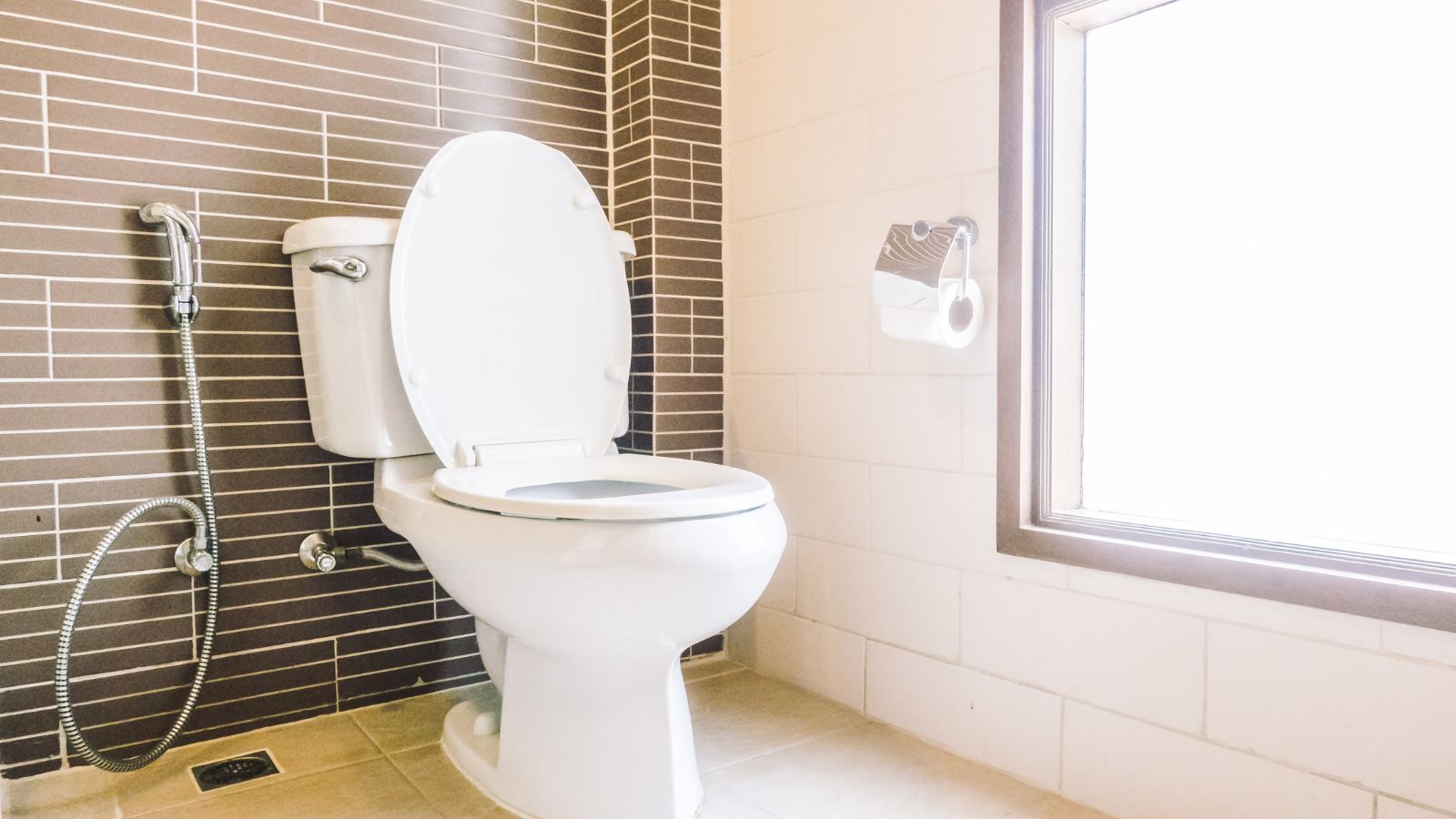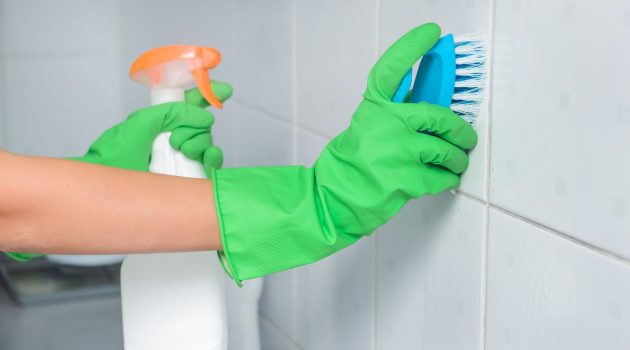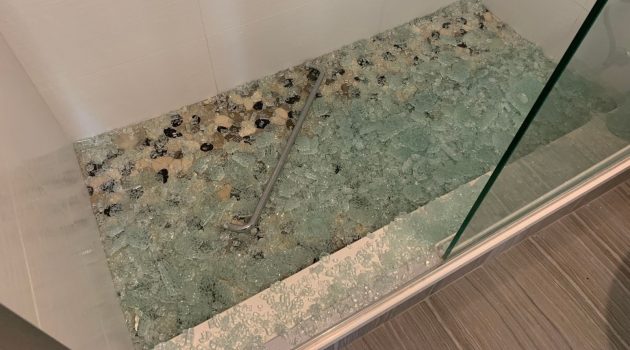Having a clogged toilet is an inconvenience you’d probably prefer to avoid.
Yet, it’s a common household issue, often caused by an obstruction in the pipes due to excess toilet paper or feces that won’t flush.
When you’re faced with a toilet clogged by poop, you might feel a bit stressed, but there are several effective methods you can employ to address the problem.
Start with a plunger, as it’s a go-to tool for most clogging issues. It uses air pressure to dislodge whatever is causing the obstruction.
If the plunger doesn’t do the trick, you still have options. Hot water mixed with dish soap can soften the feces, making it easier to flush.
For tougher clogs, a mixture of baking soda and vinegar can be used to create a reaction that helps break down the waste.
If you’re dealing with a stubborn blockage, using a toilet auger or a plumber’s snake might be necessary to physically break apart the clog.
This flexible, coiled tool can reach deeper into the toilet drain to remove obstructions that are beyond the reach of a plunger.
Remember, it’s important to use these tools carefully to prevent any damage to your toilet bowl.
If you’ve tried these methods and the problem persists, it might be time to call in a professional. They have the expertise and equipment to effectively tackle even the most persistent toilet clogs.
1. Immediate Actions to Unclog a Toilet
When faced with a clogged toilet, your prompt action is crucial. Utilizing simple household tools and ingredients can often remedy the situation before it becomes a plumber’s job.
Use a Plunger
Your first line of defense is a plunger, a reliable tool for dealing with clogged toilets. Ensure you have a flange plunger designed for toilets—not a flat sink plunger.
Place the plunger in the bowl, covering the drain completely, then push and pull the plunger vigorously, keeping the seal intact. This action should dislodge the feces and clear the passage.
Hot Water and Dish Soap Technique
The combination of hot water and dish soap can effectively break down feces.
Pour a liberal amount of dish soap into the bowl, and follow it with hot (but not boiling) water to soften and dismantle the blockage.
The soap acts as a lubricant, while the hot water helps to dissolve the feces, easing its passage down the drain.
Baking Soda and Vinegar Method
For a non-chemical approach, use baking soda and vinegar. Start by adding a cup of baking soda into the toilet bowl, followed by two cups of vinegar.
Be careful with the reaction—it will fizz. Wait for it to subside before flushing, as the chemical reaction can help break down the material clogging your toilet.
2. Understanding and Preventing Toilet Clogs
It’s essential to recognize how your lifestyle choices can impact your plumbing. Simple changes to your diet and toilet maintenance habits may significantly reduce the chances of clogs.
Diet and Lifestyle Adjustments
Fiber Intake: Increasing your fiber can help prevent constipation and ensure smoother stools. Adults should aim for about 25 to 30 grams of fiber per day. Rich sources include:
- Fruits, such as pears, berries, and oranges
- Vegetables, like broccoli, carrots, and collard greens
- Whole grains such as oatmeal, quinoa, and whole-grain breads
- Legumes, including lentils, black beans, and chickpeas
Hydration: Drinking enough water is essential; strive for 8 glasses daily to help stools pass through easily.
Exercise: Regular physical activity helps stimulate intestinal activity, thereby helping to prevent constipation and associated toilet clogs.
Proper Toilet Maintenance
Use a Toilet Brush: Regularly using a toilet brush can prevent buildup in your toilet that could lead to clogs. After each use, a quick scrub can make a big difference.
Routine Checks: Once a week, inspect your toilet for any issues that could lead to clogs. Ensure the flush is powerful enough and the water can freely flow.
If you notice a weak flush, it may be time to look inside the tank and see if anything is amiss.
By staying proactive with your diet and toilet upkeep, you’re taking positive steps toward clog-free living.
3. Advanced Unclogging Techniques
When you’re dealing with a tough poop clog, sometimes typical plunging isn’t enough. Here are some effective tools and methods you might consider to tackle those stubborn blockages in your toilet.
Manual Removal Tools
Toilet Auger: A toilet auger, often referred to as a plumbing snake, is a flexible coil of wire that can navigate the twists and turns of your toilet’s plumbing.
Carefully insert the auger into the toilet bowl, extend it until you reach the clog, then twist and push to break through the fecal impaction.
- Poop Knife: While not a commonly discussed tool, a poop knife (any long, sturdy, and disposable tool) can be used to break down large fecal matter into smaller, flushable pieces. Use it with care to avoid scratching the toilet bowl.
Chemical and Enzymatic Cleaners
Household Bleach: Pour about half a cup of household bleach into the toilet bowl and let it sit for a few minutes.
This may loosen the clog as part of a chemical reaction. After waiting, try flushing to see if it clears.
- Enzymatic Cleaners: These cleaners contain beneficial bacteria that digest organic matter, such as stuck poop. Follow the instructions on the product label, usually involving pouring the liquid into the toilet and allowing it some time to work before flushing.
Professional Plumbing Solutions
Call a Professional: When you’ve tried everything and nothing seems to work, it’s time to call in professional plumbers.
They have specialized tools and experience to handle even the most stubborn clogs.
- Wet/Dry Vacuum: A risky method is to use a wet/dry vacuum to remove the blockage. Ensure that you never use a regular vacuum cleaner for this. Suck up the water first and then try to vacuum up the clog. Extreme caution is advised when using this method to avoid messes and damage to your vacuum.
4. When to Seek Medical or Professional Help
If you’re dealing with a poop that’s stuck in the toilet and typical methods aren’t working, you should be aware of the signs that indicate more serious complications which might require professional intervention.
Recognizing Serious Complications
Symptoms that should prompt you to seek medical help include:
- Severe Abdominal Pain: If you’re experiencing intense pain that doesn’t improve after trying to pass the stool, it could suggest a blockage.
- Fever and Vomiting: These symptoms paired with constipation may indicate an infection or more serious underlying condition.
- Persistent Bloating: Bloating that doesn’t get better over time can be a sign of an obstruction.
- Dehydration: Inability to pass a stool can lead to dehydration, especially if it’s accompanied by vomiting.
- Sudden Changes: Significant changes in bowel habits or the appearance of your stools might indicate issues such as cancer or hypothyroidism.
Intervention Options for Chronic Issues
When the problem is chronic or recurring, consider these options:
- Stool Softeners and Hydration: For ongoing issues, these can help prevent fecal impaction.
- Enemas: Sometimes used to soften and break up the stool when it gets stuck.
- Medical Treatment: In severe cases, a healthcare provider may need to remove the stool using special tools.
- Surgery: Rarely, when significant damage or obstructions occur, surgery might be required.
- Hemorrhoids: If these are causing the blockage, seek treatment to reduce inflammation and allow regular passage of stools.
Remember that persistent problems with bowel movements always merit a conversation with your healthcare provider to ensure there aren’t serious underlying conditions.



